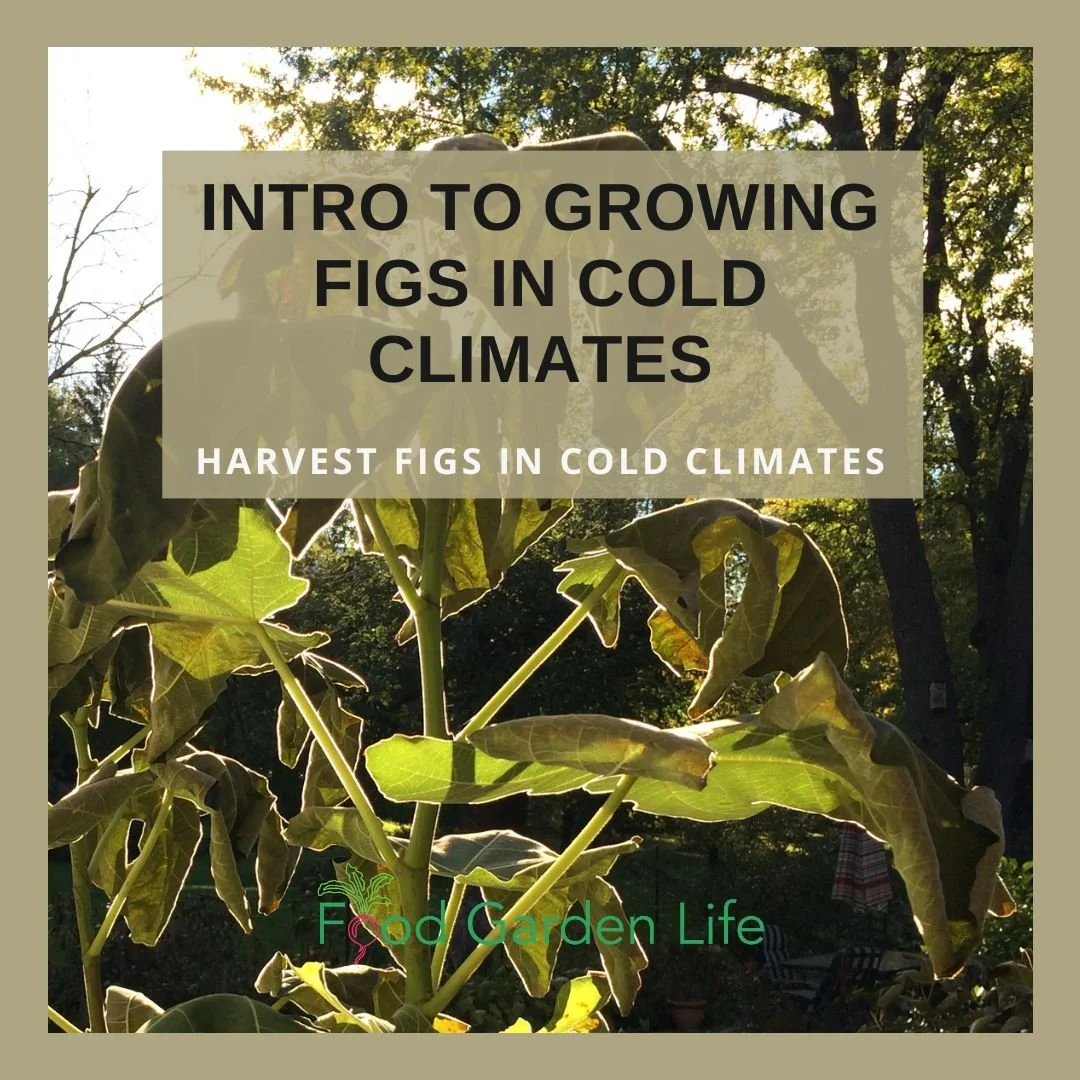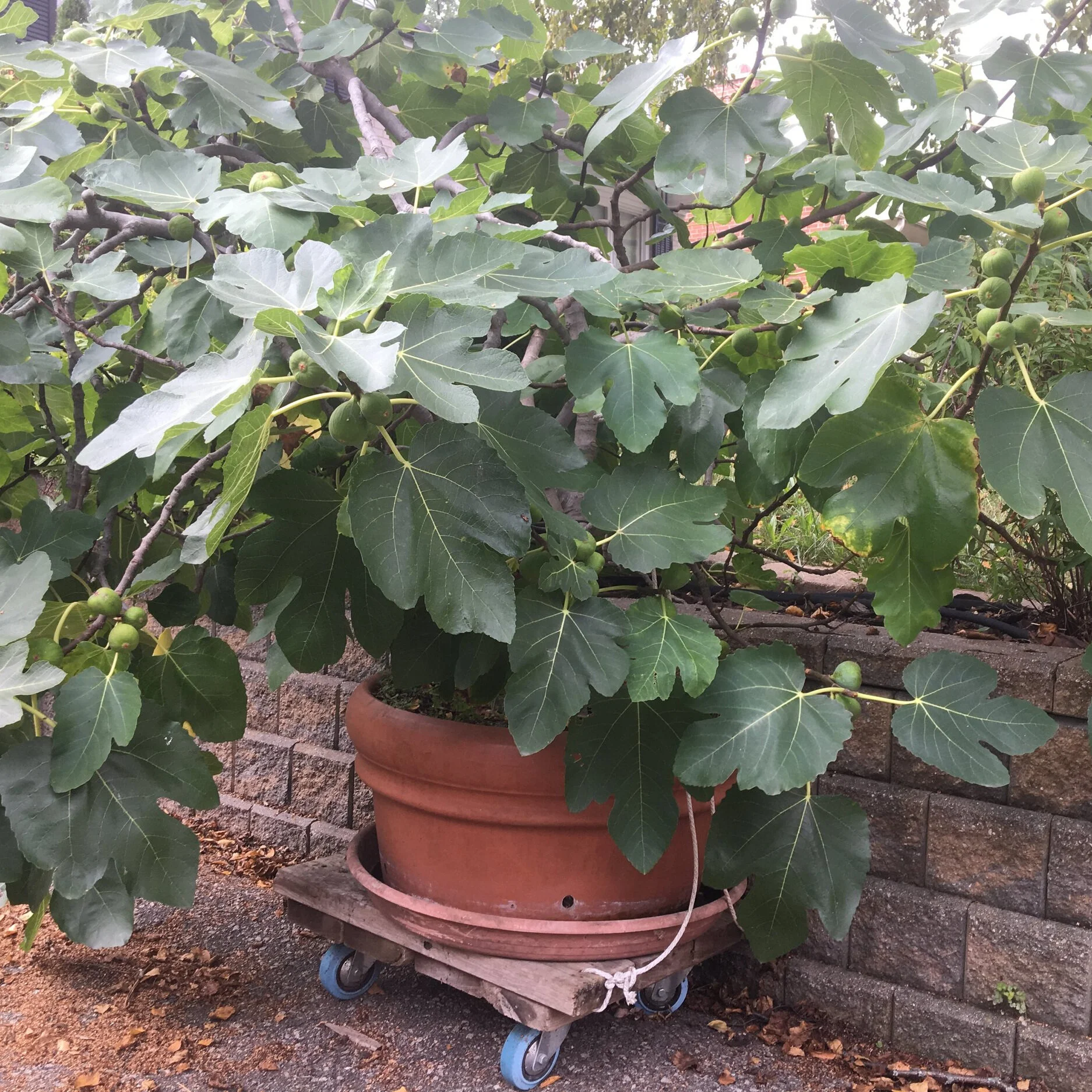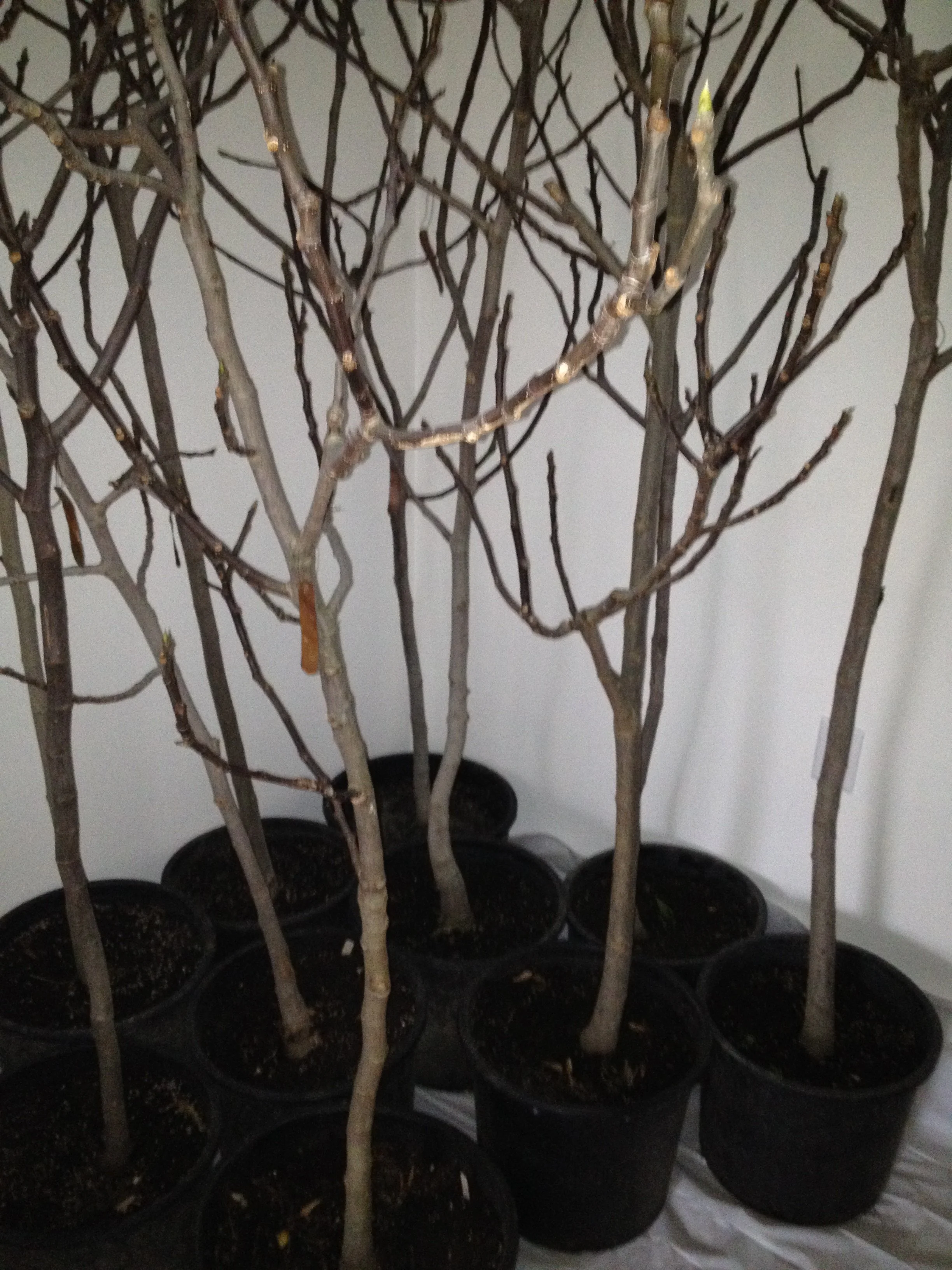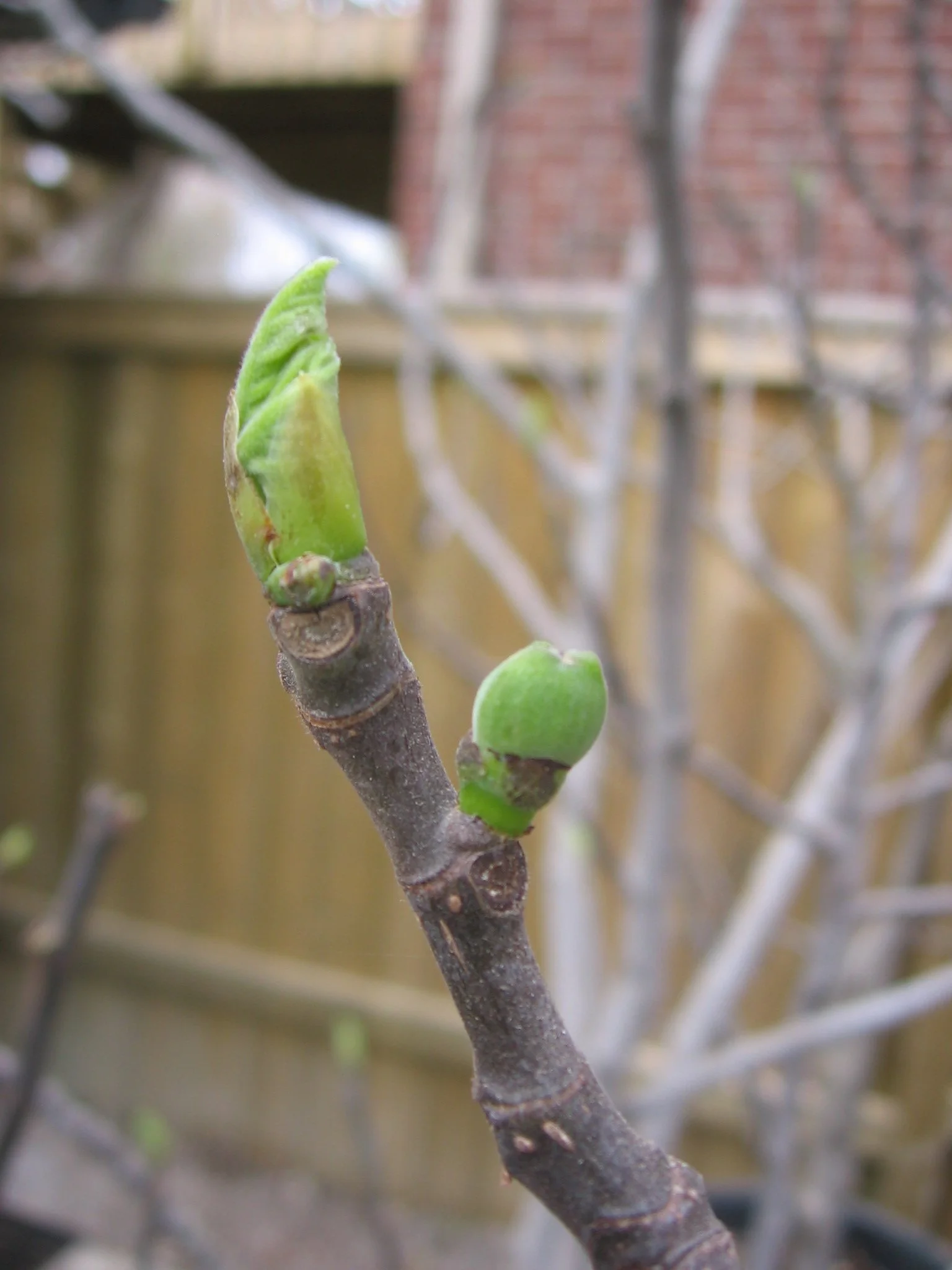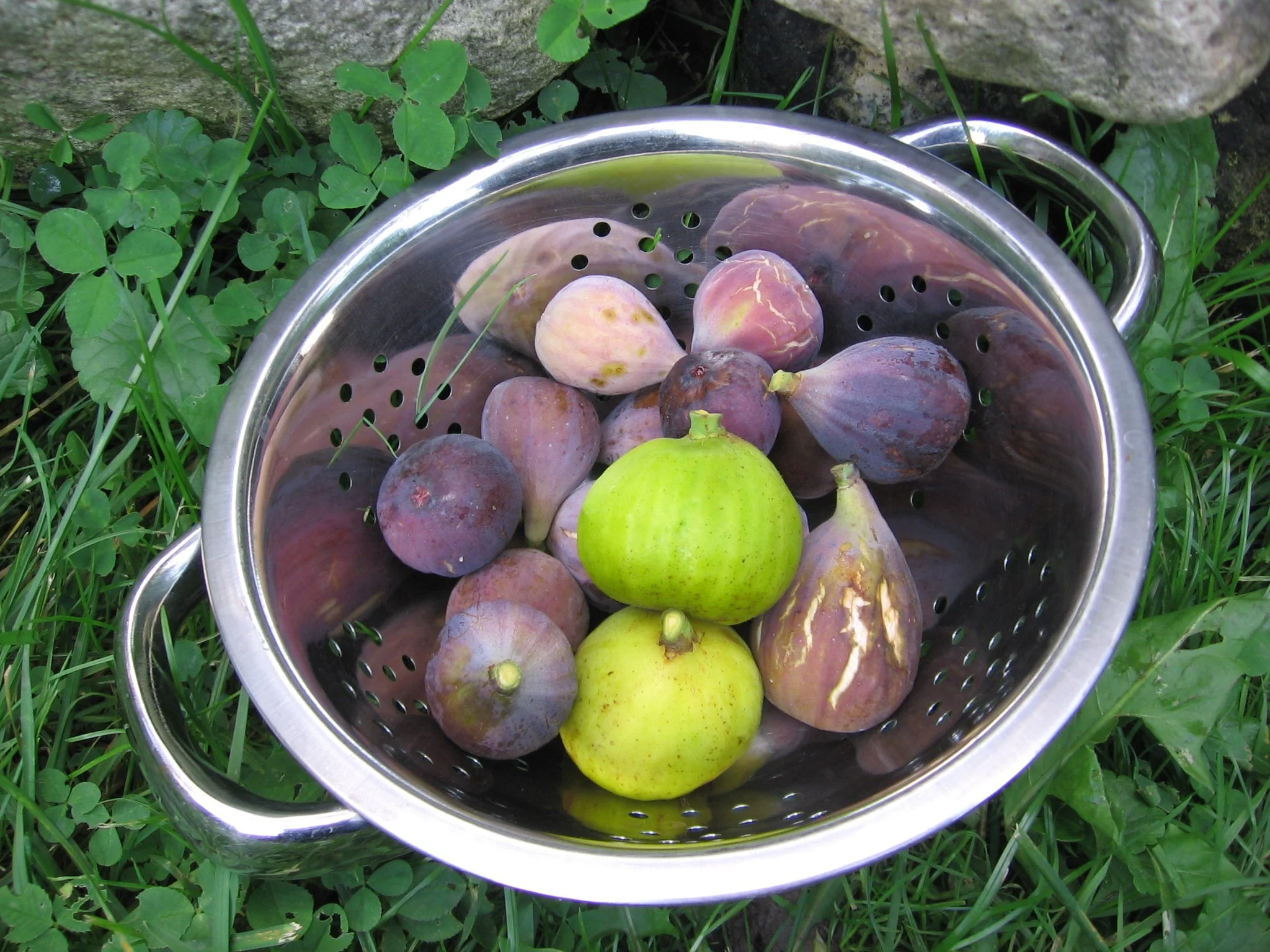Where the climate permits, fig plants can grow to 9 metres (30 feet) high.
But don’t worry!
If you’re gardening in a cold climate and took a deep breath at the mention of 9 metres — just remember that you control the size of the plant. Think of bonsai, where mature trees grow in small pots. As the gardener, you choose the size. (Keep in mind that the larger the fig tree, the more figs you can expect to get from it.)
Fig plants are naturally bushy, but can easily be pruned into a tree shape.
I keep my potted fig trees about 2 metres high, so that I can easily move them into a shed or garage for the winter. I also keep my in-ground fig trees short enough so that I can easily pick all of the figs without a ladder.
With pruning, you control the size. Find out how to prune in this Cold-Climate Guide to How to Prune a Fig Tree.
The gardener chooses how big the fig plant gets. This is my neighbour Natalie’s potted fig plant.
Fig Trees go Dormant
Because fig trees go dormant, there are many winter storage options. These are potted dormant fig trees that I store in my garage over the winter.
Many people associate figs with Mediterranean climates, with hot, dry summers and cool, wet winters. Figs grow and fruit well in these conditions. And in these Mediterranean climates, figs go dormant for the winter.
Our goal when growing figs in cold climates is to get our figs to go dormant. It gives us lots of options for overwintering. There’s no need for a greenhouse!
Where conditions permit, fig trees can grow year-round, so if you’ve heard of people growing them year-round, that’s why.
Fig Cold Tolerance
Fig plants tolerate colder temperatures than many people realize. Mature trees survive temperatures down to approximately -7 to -9°C (15-20°F).
Or colder…or, maybe, warmer. That’s because there are a few things that affect cold tolerance, so it’s not an exact science.
2 Possible Crops
The “breba” crop grows on wood from the previous year.
Figs plants can produce two crops each year:
The “breba” crop grows on wood from the previous year.
The “main crop” grows on wood from the current year.
Not all fig varieties produce breba and main-crop figs. Some varieties produce only main-crop figs.
Here’s a bit of lingo you might come across as you read about different fig varieties. It refers to a variety giving one or both of the crops:
“Biferous” fig varieties produce breba and main-crop figs.
“Uniferous” varieties produce only a main crop.
Sunlight
Fig trees give the best fruit production in full sunlight. Look for a location that has at least 8 hours of sunlight per day.
But there’s another reason that we want lots of sunlight when growing figs in cold climates: The warmer conditions in a sunny area help to speed up ripening. That’s important because season length is a limiting factor to fig production in cold climates.
Find Out How to Grow Your Own Figs
Harvest more figs this year! Grow Figs in Cold Climates Masterclass shows you how to grow a fig tree in a pot, or outside with protection. So you can harvest lots of figs!
4 Types of Fig Plant
There are four fig variety types. In cold climates, we grow the latter two types:
Caprifig (figs are non-edible, but provide pollen for Smyrna and San Pedro types)
Smyrna (figs must be pollinated to mature, otherwise they fall off before fully ripening)
San Pedro (the breba crop doesn’t need pollination; but the main crop does)
Common (both breba and main-crop figs develop without pollination)
Wondering about pollination? The deed is done by a small wasp. But we don’t have that little wasp in cold climates, which is why we can’t get smyrna figs and the second crop of San Pedro figs to ripen. They will form…and start to grow…but then fall off before fully ripening.
So in cold climates we grow Common and San Pedro type figs.
Wondering How Many Figs You Can Expect to Harvest?
The size of the fig harvest you can expect in a cold climate depends on the variety, plant size, growing conditions, and season length.
The size of the fig harvest you can expect in a cold climate depends on a few things:
Variety
Plant size
Growing conditions
Season length
But if you give your fig plant favourable growing conditions, it’s not unreasonable to expect 100-200 figs from an 8’ high bush.
Figs don’t all ripen at the same time. Maturity is sequential, beginning with lower fruit.
Ripening slows down in cool weather, and then stops as the plant drop its leaves and goes dormant.
Looking for More Fig Tips?
Interviews with Cold-Climate Fig Growers
Find out what these 2 cold-climate fig growers do.
More Fig Articles and Interviews
Fig Masterclass
Find Out How to Grow Your Own Figs
Harvest more figs this year! Grow Figs in Cold Climates Masterclass shows you how to grow a fig tree in a pot, or outside with protection. So you can harvest lots of figs!

